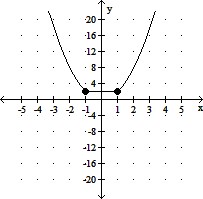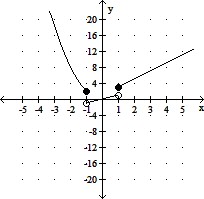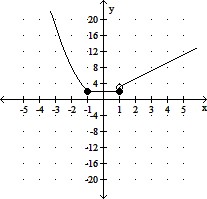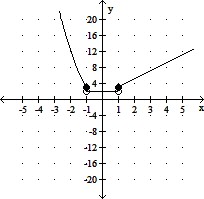Graph the function and then find the specified limit. When necessary, state that the limit does not exist.f(x) =  ;
;  f(x)
f(x) 
A.  f(x) = 2
f(x) = 2
B.  f(x) does not exist
f(x) does not exist
C.  f(x) = 2
f(x) = 2
D.  f(x) = 3
f(x) = 3
Answer: C
You might also like to view...
Simplify the expression.
?

What will be an ideal response?
Use the addition property of equality to solve the equation.x + 5 = 7
A. 2
B. 12
C. -2
D. 
Solve the problem.A company makes 3 types of cable. Cable A requires 3 black, 3 white, and 2 red wires. B requires 1 black, 2 white, and 1 red. C requires 2 black, 1 white, and 2 red. They used 95 black, 100 white and 90 red wires. How many of each cable were made?
A. 30 cable A 5 cable B 25 cable C B. 5 cable A 30 cable B 25 cable C C. 5 cable A 18 cable B 25 cable C D. 58 cable A 30 cable B 22 cable C
Answer the following statement(s) true (T) or false (F)
1. A kite has all sides congruent. 2. Both pairs of opposite sides are parallel in a square. 3. Diagonals are congruent in a parallelogram. 4. Opposite angles are congruent in a rectangle. 5. Diagonals bisect each other in a parallelogram.